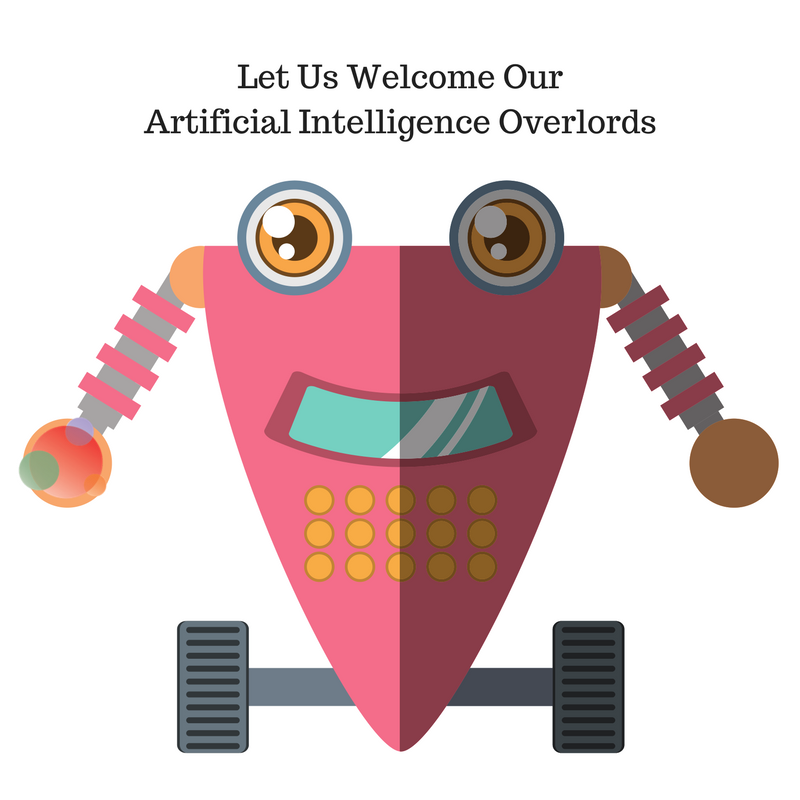 There’s been a lot of recent attention—including in these pages—around this year being the year that artificial intelligence is going to start replacing humans at our jobs.
There’s been a lot of recent attention—including in these pages—around this year being the year that artificial intelligence is going to start replacing humans at our jobs.
The Guardian recently reported on a Japanese firm that was replacing a number of its human workers with IBM Watson.
And this isn’t a new thing—newspapers have used artificial intelligence for writing basic sports articles for half a decade.
You might think I’d be worried artificial intelligence was going to take our jobs.
But I’m not!
Instead, I’m excited about the possibilities artificial intelligence and predictive learning allow us to operate better.
Get Rid of Low-Value, Repetitive Tasks
For many, reporting is a combination of Excel spreadsheets and PowerPoint decks being used to manipulate and beautify data that’s being cobbled together from a number of disparate systems.
Although larger companies have been able to afford business intelligence platforms that integrate customer relationship management, analytics, and marketing automation data, this has been largely out of reach for small and medium-sized business owners.
As more applications that harness artificial intelligence come to market, we’ll see price points decrease and adoption increase.
This will free up marketing teams from boring, routine tasks that currently take up nearly a third of their time but that can be automated.
Better Decisions on Communications Spend
Your competitor just rolled out a SnapChat customer service channel.
Should you jump onboard, too?
What if it everyone does it and you’re left behind?
But if you start a new customer interaction channel, who’s going to staff it?
FOMO is a terrible thing.
It can cause otherwise rational, ROI-driven people to overextend their resources trying to keep up with the next new thing.
Predictive analytics and artificial intelligence have the potential to take the emotion out of these decisions and instead use data to make these critical decisions.
Bring the Influencer Economy Back Down to Earth
Is it a good investment for a company to spend thousands of dollars for one celebrity social media post with some brand messaging and a product placement?
What about social media influencers—how much should you pay for a piece of sponsored content?
Right now, influencer marketing is still the wild west.
Although there are platforms such as Traackr to help identify influencers with an engaged following and track the results of any campaigns you conduct with them, many marketing teams are taking a manual, ad-hoc approach to determining the level they are willing to invest in each influencer relationship.
As artificial intelligence improves, it will become easier for us to identify and connect with influencers who are more likely to drive purchase decisions.
This is much better than having to depend on vanity metrics, such as audience size and impressions.
Increase Ability to Track Multi-Touch Attribution
If your organization is only tracking the customer communications that resulted in initial contact with your company (a.k.a. “first touch”) and the last piece of content they consumed before purchasing (a.k.a. “last touch”), I guarantee you are making bad decisions about where to invest your marketing dollars.
Unless you are selling an impulse-purchase product that someone will one-click purchase from an Instagram post, your prospective customers may be having dozens of interactions with your brand before they make that purchase.
This focus only on first- and last-touch has a tendency to miss the role that PR has in everything from building brand awareness to get you in the consideration set for a purchase in the first place through to being a source of the third party validation that’s often needed to make a final purchase decision.
Improve Branding Consistency
Even with brand style guides and templates in place, it can be difficult to ensure every communication that goes out from your organization reflects your most up-to-date standards.
And let’s face it—sometimes we make a mistake, such as transposing a couple of numbers in a phone number on a print ad.
This is the kind of error that can cost an organization six figures or more in both the marketing spend and the lost sales opportunities.
Imagine being able to teach an artificial intelligence your brand style guide.
It could use it to proofread every communication before it was finalized.
And have it check phone numbers and URLs against your content management system’s data repository.
Would this put some proofreaders and copyeditors out of a job?
Possibly.
But it can also free them up to spend more time coaching the writers in their organization on improving their writing and fact-checking content to ensure someone hasn’t gotten fooled into linking to fake news.
Artificial Intelligence in Our Organization
This year, I’ve challenged my team to take an objective look at the work they do every day and identify what repeatable tasks could be replaced with artificial intelligence of some sort.
Instead of investing in growing our team by another human member this year, we plan to invest in technology that takes routine tasks off our plates to give us more time to focus on work that needs our brains and our collaboration to get done.
This isn’t just an attempt to get more productivity out of our team—they’re already incredible at their jobs.
It’s about freeing up more of their time to focus on the parts of their jobs they love to do and that will drive our business forward.
No one is going to miss their spreadsheet jockeying or the calendar scheduling email rounds.
But I bet they will be excited about offloading a substantial part of their monthly to do lists to a fast, efficient system that does exactly what they tell it to do.
I can’t wait to meet our new artificial intelligence robot assistants—we have some work for them to do!